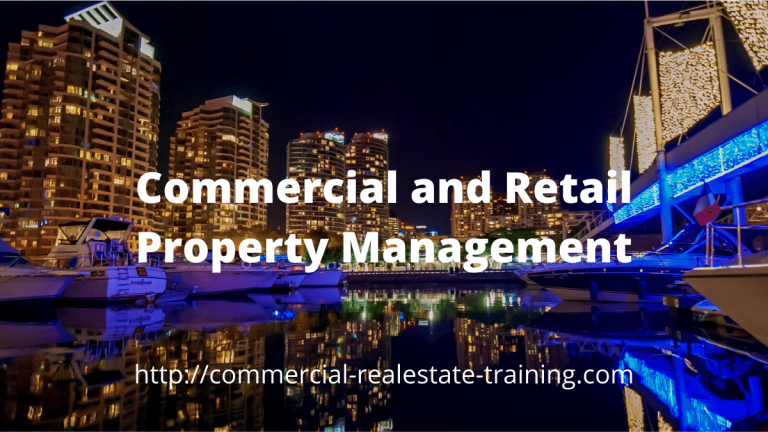How to Break New Ground in Commercial Property Management
There are a couple of things about commercial property management that should be said here. Firstly, the segment of the industry is very lucrative as a source of sales and leasing brokerage business over the long term. Secondly, the property management services required today in servicing a client are comprehensive.
(N.B. these ideas are also sent out to regularly to our friends in Commercial Real Estate Online Snapshot to help amplify brokerage results…. Get your access here)
Get things sorted
So don’t attempt to build a portfolio of properties without the right business tools and experienced people to make it all happen. Mistakes can be made if you haven’t got those two issues under control, and then you can lose business just as fast as it is coming in.
The clients that we serve in commercial and retail property, require the best people to help them with the best recommendations to take things forward. To convert and keep these investor clients for the long term, the professional services that you offer should be well considered and structured. Be the ‘best’ at what you do.
Drill down professionally
So, are you up to the challenge of working in this very special asset performance segment of our property industry? Do you have the ability to drill down into property performance and improvement, and then do something with what you see and identify? There are some relevant strategies here and hands on experience will help you see those things. You never really stop learning in our industry; every week you will come across something that is new or different.
Growth at speed
What do you have to do here to grow your real estate business faster? You will have to work with tenants, landlords, contractors, stakeholders, and other property owners to achieve property management results. They all have ‘agendas and issues’ that are factors in the performance of a property financially or physically; local property knowledge and on the job experience will help you deal with that.
A good property manager looks at a property from all perspectives, and in doing so keeps their client and the clients targets are the forefront of the property activity. A top class property manager will always have relevant ideas and skills where they can make recommendations to help their clients.
How do you get started with this concept?
You have to look at the strengths and weaknesses of a property or tenancy situation, and then do something with it based on the targets and instructions of your client (the landlord). You can and should be the advisor to help your client through the barriers and hurdles of property ownership and performance.
Why not try breaking some new ground as an industry specialist, and then showing the investors locally that you are the ‘go to person’ when it comes to property control and optimization. In simple terms you can stand out as the specialist for property management and tenant mix enhancement.
Don’t just manage a property; improve it!
Put plans in place to take a property forward in an ongoing way. Show the client how you can be the person to bring about real change and opportunity in their asset. Break new ground as an industry professional. Here are some ideas to help you do that:
- Look at income opportunities – There will always be a number of levels of income generation in a managed property. Rent, outgoings, leases, and licenses are just a few of the most common. Develop a clear process of reviewing current income streams, and then enhancing them through logical management processes.
- Assess expenditure wisely – Every property today will have expenditure challenges; it’s a normal part of property ownership. The operational running of the property on a daily basis will create budgetary facts and difficulties. Look at a property for the running costs that it creates and the bills that need to be paid. Customer and tenant use of the property will push expenditure upwards. So what are the bigger items to look at firstly? Rates and taxes will be the largest to control and time into the property cash flow. Assess the history of the property from a cash flow perspective and you will soon see the peaks and troughs in expenditure. You can then address the budgetary requirement. Somewhere through that process, the landlord will have mortgage payments to make and unexpected expenditure arising. A budget is critical to keep those matters on track; get the budget sorted and confirmed.
- Attract the best tenants to the property – As time passes you will get vacancies arising in the asset; it’s a fact of life in property ownership and investment. Some leases will come to an end and other tenants will outgrow their lease size or the property improvements. They will move on. So you have to do something with that vacancy challenge and stay ahead of it. Get to know successful businesses locally so you can pull in some new local tenants when a vacancy challenge starts to take shape in your managed asset. If you watch your lease expiry dates 12 months in advance, the challenge of locating tenants is not so much of a problem.
- Talk to your current tenants, control them and keep them! – In connecting with your current tenants regularly, you can stay ahead of their occupancy problems. Ask them about their business and how their industry is performing; take plenty of notes and refer back to issues that could impede property performance. Look for tenant growth or contraction issues. If they have a cash flow problem that stifles or slows rental payments, talk to the tenant and try to work out a rental plan payment before you get a vacancy. It costs everyone significantly when a tenant vacates. Avoid the problem through planning.
- Establish a tenant retention plan from the very start – From the previous point, a tenant retention plan is very useful and is highly recommended, especially when you have multiple tenants in occupancy. Mix and match your lease expiry dates so you can move tenants around in a multi-level building to optimize occupancy, lease conditions, and rental returns.
- Set benchmarks for market rent negotiations – When you look ahead into a new financial period for the property and the landlord client, there will be market rental negotiations to prepare for. At the start of the year, set some targets on rents, taking into account the supply and demand for local property and the vacancy factors. It is a bit like setting income goals; the landlord then knows what you are attempting to achieve with the lease negotiations through the year.
- Use a standard lease approach – The landlord will have investment targets and a well-designed lease will help them stay on track towards their goals. Most landlords that own multiple properties will have a lease document that they can use in most leasing situations; that document can be enhanced and tuned to investment targets over time. A standard document of this type for your client will also help with lease negotiations; you will have something to start of any new lease negotiation.
- Provide comprehensive reporting to the landlord – Information will always help you service and negotiate with the landlord. Set up a series of reporting strategies that help the landlord understand rental streams, expenditure expectations, and lease changes. A good property budget integrated into that process will help you greatly.
The object with all of these things here is to provide a professional property management service to your landlords in commercial and retail property. Break some new ground in your business activities so you are the obvious choice when it comes to asset performance and management.








